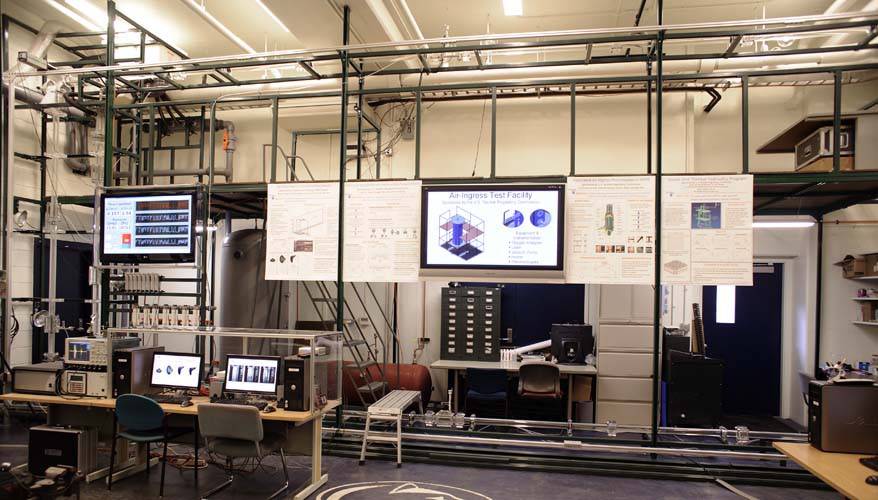Experiments for the Development of TRACE with Interfacial Area Transport Models
Research Supported by the United States Nuclear Regulatory Commission
The objective of the present research is to establish a database of local two-phase flow parameters in a high void fraction range of approximately 30% to 80% to support the development of the interfacial area transport models for the NRC’s thermal-hydraulics code TRACE. The interfacial area concentration, ai, is an important geometric parameter in two-phase flows, as it is directly related to the transfer of mass, momentum, and energy between the two phases. Thus, an accurate estimate of ai is critical to modeling two-phase flows.
